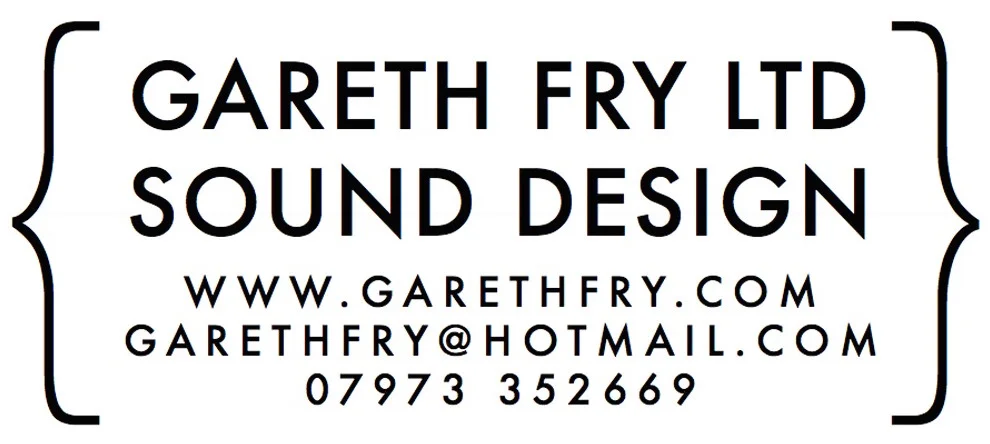Sound Design kit on a limited budget
If you’re interested in exploring sound design, and are on a limited budget, here are my recommendations to get started. There is a longer list of kit here if you’ve more money to spend.
First and foremost to say, sound design will require a computer of some sort. Most people use a laptop for portability. A Mac or PC will work well. Mac’s are more commonplace, but PC’s are cheaper and a lot of the software will run on either. A tablet won’t cut it, I’m afraid. However, you don’t need the newest, most powerful computer for sound design. Pretty much any computer built in the last few years will work fine for the purpose of getting started. A second hand MacBook Pro is a good investment. Aim to get more RAM than the 8GB most base models have (16GB or more).
You’ll need some software to edit sound with. Garageband, which comes free with Apple computers is a good starting point but ultimately frustrating in its simplicity. Its sister program, Logic Pro, is a fully featured package, which I’ve used for many years, but it does cost £199. Instead, buy one of the hardware devices below, as they all come with lite versions of some very good software, for free.
One thing to bear in mind, the industry standard software for playing back sound during a theatre performance is Figure 53’s QLab, which you might need to be able to program, is Mac only.
Hardware
Zoom H4N Pro
This is a little workhorse of a device. Firstly, it’s a portable recording device, for recording your own sound effects, voices, music, etc, in stereo, at high quality. Secondly, it has XLR microphone inputs and a 3.5mm input so you can plug in any standard microphone to upgrade on the built-in mic’s, or to plug into a mixing desk, for example, to record the desk outputs. Thirdly, it can also work as a audio interface/sound card for your computer, so you can record sound directly to your computer from any of the Zoom’s inputs. Fourthly, it comes with Cubase LE software, which is worth £60 itself, and allows you to edit, process and mix sound.
Zoom H4N Pro: https://amzn.to/2YTp18o
16gb SD card: https://amzn.to/2Xc6u6y
Windshield: https://amzn.to/3p83Tq1 (this one is pricey but good, cheaper versions are available)
Focusrite Scarlett
If you don’t think location recording is going to feature much in your work, a simpler/cheaper audio interface like the Focusrite Scarlett 2i2 3rd Gen will do you fine. This allows you to connect microphones directly to your computer for recording. It also comes with some great editing software, Ableton Live Lite.
Focusrite Scarlett 2i2 3rd Gen: https://amzn.to/3j20Go0
Akai APC Mini or Novation LaunchKey Mini
Creating and editing sound on your computer can be a bit frustrating when you’re limited to a mouse and keyboard. These two devices allow you to get a bit more hands-on. I use Ableton Live software a lot to create, edit and manipulate sound. It is particularly useful in rehearsals when combined with the APC Mini, as the touch pads allow you to fire off sound effects, music, voice-overs, etc, with ease, whilst you can adjust the levels of them using the volume faders. It comes with Ableton Live Lite, for free, which is a cut down but very usable version of this software that excels for live use, for improvising and devising sound, and for recording and processing microphones. The Novation LaunchKey Mini is good if you have a more musical leaning, and also comes with Ableton Live Lite.
Akai APC Mini: https://amzn.to/3mVinGJ
LaunchKey Mini https://amzn.to/3GCzZ4E
Sony MDR7506 headphones
A good pair of headphones is really critical. These Sony headphones are really nice sounding, comfy and fold up small to pack in a bag. You can buy spare parts in case any part of them breaks, so are a good long term investment.
You can of course buy headphones cheaper than this, but they tend not to sound great, or be very durable. I don’t have any specific recommendations, but look at Sennheiser, Sony, AKG brands. Avoid DJ headphones, particularly Beats headphones, at all costs as they’re designed to emphasise certain frequencies which will skew your work.
Sony MDR-7506: https://amzn.to/3DUPIsc
Software
There is lots of information on different software packages here: Sound Designers kit
A popular, and very powerful bit of software for editing sound is Cockos Reaper, with full licenses costing from $60. It has a 60day evaluation period to, to really get to know it before you invest.
Sounds
For sound effects, check out Baseheads Creator Edition. This is software that allows you to quickly search and audition sound effects, for free, and comes with over 160,000 free sound effects.
Check out Freesound.org too, though quality can be variable.
Bits and bobs
You’ll often need to connect to a sound system. These cables will allow you to do so.
3.5mm mini jack to dual XLR plug: https://amzn.to/3G8zWfx
3.5mm mini jack to dual phono cable: https://amzn.to/3jnEULr
Network cable (aka Ethernet, Cat5 cable), 20m: https://amzn.to/3pll2MR


